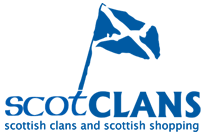The Flower of Scotland!
The thistle is the national flower of Scotland, much like the rose is the national flower of England and the United States. Today we’re going to look at two interesting things about this flower, the tale as to why it became the national flower and also the unofficial national anthem it inspired.

There are several different legends that tell how the thistle became Scotland’s symbol, but most date from the reign of Alexander III and in particular the events surrounding the Battle of Largs in 1263.
It is often forgotten, that for hundreds of years much of Scotland was part of the Kingdom of Norway. By 1263 however, Norway seems to have had little interest in their former territory. That was until King Alexander III proposed to buy back the Western Isles and Kintyre from the Norse King Haakon IV. The thought of relieving King Alexander of some of his riches and territories appears to have re-kindled Norse interest in Scotland.
Late in the summer of 1263 King Haakon of Norway, now intent on conquering the Scots, set off with a sizeable fleet of  longships for the Scottish coast. Gales and fierce storms forced some of the ships onto the beach at Largs in Ayrshire, and a Norwegian force was landed.
longships for the Scottish coast. Gales and fierce storms forced some of the ships onto the beach at Largs in Ayrshire, and a Norwegian force was landed.
Legend has it that at some point during the invasion the Norsemen tried to surprise the sleeping Scottish Clansmen. In order to move more stealthily under the cover of darkness the Norsemen removed their footwear. But as they crept barefoot they came across an area of ground covered in thistles and one of Haakon’s men unfortunately stood on one and shrieked out in pain, thus alerting the Clansmen to the advancing Norsemen.
His shout warned the Scots who defeated the Norsemen at the Battle of Largs, thus saving Scotland from invasion. The important role that the thistle had played was recognised and so was chosen as Scotland’s national emblem.

‘Flower of Scotland’ is considered the unofficial national anthem of Scotland.
 There are several other songs that have been considered to be the unofficial national anthem of Scotland including; Scots Wha Hae, Scotland the Brave and the more recent Highland Cathedral. Although in July 2006, the Royal Scottish National Orchestra conducted an online poll in which voters could choose a national anthem from one of five candidates.10,000 people took part in the poll in which Flower of Scotland came out the winner.
There are several other songs that have been considered to be the unofficial national anthem of Scotland including; Scots Wha Hae, Scotland the Brave and the more recent Highland Cathedral. Although in July 2006, the Royal Scottish National Orchestra conducted an online poll in which voters could choose a national anthem from one of five candidates.10,000 people took part in the poll in which Flower of Scotland came out the winner.
The lyrics were written by Roy Williamson (1936-90) and the song was performed initially by The Corries, a Scottish folk band, and refers to the victory of the Scots, led by Robert the Bruce, over England’s Edward II at the Battle of Bannockburn in 1314. The music is actually somewhat older, and was composed by Peter Dodds McCormick (c1834-1916) who emigrated to Australia as a young man, and also composed the National Anthem of Australia, “Advance Australia Fair”.
The song is also known as Flùr Na H-Alba” in Scottish Gaelic, and “Flouer O Scotland” in Scots.
The title has also been used for a history book: The Flower Of Scotland: A History Of Scottish Monarchy by James J.  Sharp, and for the biography of Roy Williamson, which was published by his daughter Karen in 1993.
Sharp, and for the biography of Roy Williamson, which was published by his daughter Karen in 1993.
There also exists a Flower of Scotland tartan which was created in the early 90′s to honour the late Roy Williamson. The design is based on the setting and thread count of the Gunn tartan, as worn by Roy Williamson, using the traditional 18th-century colours of Lichen Green and Lochan Blue although it has no Clan or family affiliation and therefore is available for all to wear.
Thistle Products from ScotClans…
Tagged
















